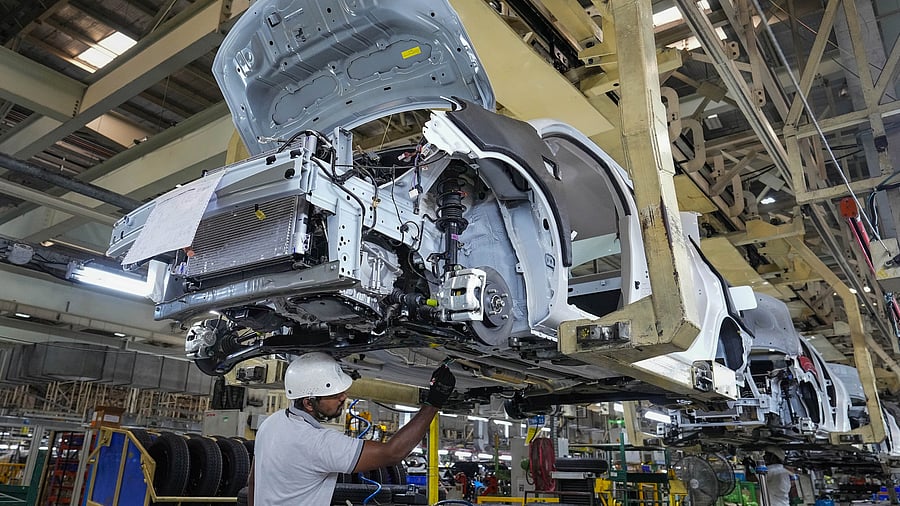
Employees work in an assembly line at the joint manufacturing facility of Renault-Nissan Automotive India Pvt Ltd, near Chennai.
Credit: PTI Photo
Bengaluru: The manufacturing temporary workforce saw a 5.6 per cent annual growth in pay from financial year 2021 (FY21) to FY24, as per a report by staffing solutions company Teamlease Services out on Monday.
The expansion of the manufacturing sector was led by industries like electronics manufacturing, automotive, textiles, and chemicals.
The sector is experiencing significant demand for blue-collar and grey-collar roles like assembly line workers, welders, and logistics personnel, as well as white-collar roles like production supervisors, quality inspectors, and supply chain managers.
High gender disparity
Still, the gender disparity within the temporary workforce is significant as 89.5 per cent of employees in temporary roles are male.
The average pay of males in the temp workforce is also higher than that of females.
However, women demonstrate higher representation in postgraduate qualifications (24.3 per cent compared to 10.5 per cent of males). Males dominate in technical roles with greater representation in diplomas (13.5 per cent versus 5.7 per cent) and industrial training institutes (11.5 per cent, data absent for females).
Attrition woes
Attrition is also a persistent challenge for the sector, with more than 43 per cent of temporary workers leaving within a year and 8.7 per cent exiting within the first three months of employment.
Overall, more than half of the temporary workforce has a tenure of less than one year.
Female employees face additional hurdles, with 66 per cent leaving their jobs within a year, often due to safety concerns and commuting difficulties.
Maharashtra (17.2 per cent) and Tamil Nadu (14.6 per cent) are the leading states in contractual workforce contributions, followed by Uttar Pradesh (9.6 per cent) and Karnataka (9.4 per cent).
India has around 69,233 compliances, much of which the manufacturing industry faces. However, over 3,600 regulations have been decriminalised to ease the compliance burden.
Over 27 million people are employed in this sector, with women accounting for 30 per cent of the workforce.